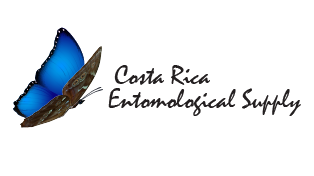As you have read in the past edition of the “Flutterings”, during the IABES conference held in Holland in October 2017, many speakers (including myself) had the opportunity to share our perspectives around different topics that have an impact in our industry, and actively involve the audience to take part of the discussions.
Considering the audience involved only those who were present at the conference, I feel called to share a quick summary about the presentation I gave, which addressed the transformation that butterfly farmers in Costa Rica have gone through over the past 33 years. My hope is to spread out this information among our global community and make you all part of the solutions we will need in the years ahead.
Before I go into the details of this article, I must say that my main drive when preparing for this presentation was that I deeply believe it is of utter importance to know the status of our butterfly farmers, especially because they are the beginning of a long chain that ensures the display of butterflies can continue happening as it has over the last 3 decades. Therefore, taking enough time to understand their challenges, at a professional and personal level, and to partner closely with them to ensure their success in the long term is of vital importance, since their success is crucial to our collective success as an industry, and it is a shared responsibility we all must take into consideration as we move forward.
In Costa Rica, butterfly farming started in 1984 when CRES began its operation and opened the possibility to export butterflies to the global market. This opportunity allowed many farmers in rural areas in Costa Rica to move from aggressive agricultural practices into a completely different world, a world where they could dedicate their all parcels of land to breed butterflies, and become agents of change in their communities by promoting a more sustainable economic activity in favor of the preservation of natural habitats of neotropical butterflies. This allowed them to become entrepreneurs, looking to create a “business” that could be sustainable for their families and future generations.
But over the past years, it is becoming more and more evident that their passion and motivation has been affected by different aspects. After the many visits I did when joining CRES in July 2016, I felt called to prepare a survey where we could capture information to understand their situation better and see how we can effectively help to improve their lives and, as a result, improve the quality of the butterflies they breed to sustain all exhibits in the long term.
In this survey, we collected many different data elements, and one of the key facts we found out, which was the main message shared in my presentation, is an unbalance in terms of the age of our breeders. We found out that over 50% of them are people with 50 years of age or more, and the number of young breeders (40 years old or less) only represent 14%. (see chart above). This unbalance affects the efficiency on how each farm operates (sickness, reduced time to work, less focus to detail, etc.) and, consequently, could put at risk the constant availability of pupae for export purposes.
For the presentation, we decided to put special attention to understand “why” this is happening, by asking additional questions to our breeders that could help us understand why some of the younger generations in the breeder’s families are not getting involved into this activity. When we asked our breeders this question, we identified 2 recurrent reasons:
1) There is an evident shift in the goals and aspirations of younger generations: most of the families expressed that their younger children are looking for opportunities to move to the “industrialized city” instead of rural living
2) The income they are generating is no longer enough to sustain their families, which translates into a less encouraging environment to involve younger generations (summarized by a statement constantly expressed: “I don’t want my kids to dedicate to butterfly farming; I know they won’t be able to sustain their families in the future if they do what I do”)
After learning about these facts, I believe it is imperative for all us to reflect about them, and specially to spend some time and reconsider the principles under which we have made our buying and selling decisions in the past years and how they could have contributed to this situation. We need to understand that behind every decision we make, there will be a ripple effect in the families that dedicate day in and day out to such labor-intensive activity.
Clearly, all exporters and suppliers will be those in the front of this battle, dealing with the immediate challenges that this situation entails, but I believe this should be something we all must be aware of and participate of the discussions where solutions can be proposed and evaluated.
Our success depends on the global success of all those involved in this activity, therefore I want to invite all readers to share their perspectives, ideas and potential solutions for this, so we can collectively find new ways to create a prosperous environment where all those involved in this activity can thrive, and maybe even involve exhibit visitors to join us in this challenge we have for the years ahead. Thanks for reading!
To download the complete presentation, please click here
